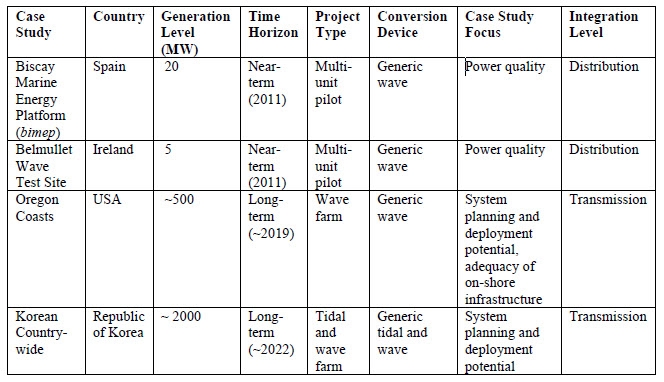

A report prepared by Tecnalia, Powertech Labs and HMRC As part of the OES-IA Annex III Collaborative Task on Integration of Ocean Energy Plants into Electrical Grids (OES-IA Document No: T0331)
EXECUTIVE SUMMARY
Ocean renewable energy is an emerging resource option. In the long term, ocean renewable energy has the potential to provide a significant share of global energy needs. Currently, some of the conversion technologies for harnessing variable wave and tidal current energy resources are reaching commercial stage. Several pilot projects, having sizes upto 2 MW, are operating in various parts of the world. Also multi-MW wave and tidal current energy farms are being developed. Identification of the near- and longer-term technical potential of wave and tidal current resources that could be integrated to existing and future electricity infrastructure in a region is an important step towards developing integrated long-term energy planning for the region and relevant policy instruments to realize the potential.
During the past three years, a collaborative project related to integration of wave and tidal current energy into electrical systems (known as Annex III) was carried out under the umbrella of the International Energy Agency’s Implementing Agreement on Ocean Energy Systems (OES-IA) (www.iea-oceans.org). Following the completion of the Work Packages 1 and 2 under the Annex III of IEA’s Ocean Energy Implementing Agreement, a number of landmark activities took place within the emerging global ocean energy sector.
This report summarizes the work performed through the Work Package 3 activities. The report provides insight into the grid integration of wave and tidal current resources, particularly through case studies spanning a wide range of scenarios. In particular, the following case studies are presented in this report:

.........